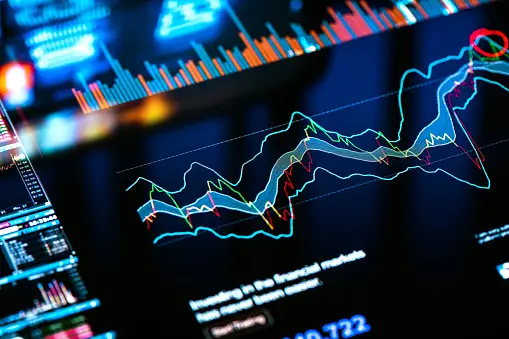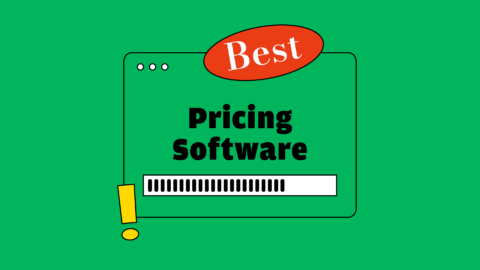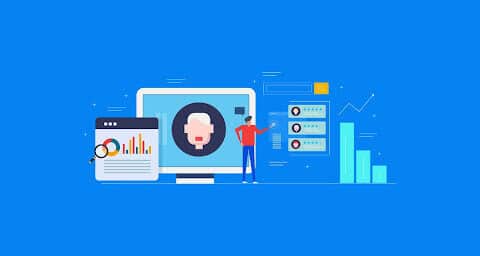Benefits and Challenges of Trading Software Development
Nowadays, when trading software has revolutionized the financial industry, traders are provided with advanced tools and technologies to enhance their trading activities. This article will discuss the advantages and disadvantages of such Trading Software Development and demonstrate how this industry has altered how consumers engage with the financial markets.
Table of Contents
By streamlining the processes of trading, data analysis, and risk management, trading software has become an indispensable tool in the financial sector. While there are certainly advantages to technological progress, there are also new problems that must be solved. How? Let’s discover together.
Benefits of Trading Software Development
Increased Efficiency and Speed
Let’s agree that today’s digitalized world requires speed. Building a trading platform and developing software, in this terms, fully fits into the frames of efficiency and speed enabling traders to execute transactions swiftly, eliminating the need for manual order placement. With automated trade execution, orders can be placed in milliseconds, reducing the time lag between market movements and trade execution. This increased efficiency and speed can lead to better trade outcomes and improved profitability.
Access to Real-Time Data and Analytics
Trading software provides traders with access to real-time market data and advanced analytics tools. This empowers them to make informed decisions based on the latest information and market trends. By analyzing historical and real-time data, traders can identify patterns, detect opportunities, and implement successful trading strategies.
Automation of Trading Processes with Trading Software Development
Maybe the most vital advantage of trading software is its ability to automate processes. Thus, traders can program the software to make trades automatically under certain conditions by setting rules and parameters. In addition, automation reduces the need for human intervention and eliminates emotional bias, leading to more steady and methodical processes.
Enhanced Decision-Making
Without a doubt, when businesses have access to high-quality software that includes in-depth charting and technical analysis tools, they are more capable to analyze market trends, spotting patterns, and making sound choices. Trading software improves traders’ judgment by giving indicators, trend lines, and other analytical tools that help them determine entry and exit points.
Diversification of Investment Strategies
Day, swing, and algorithmic trading are just a few of the investing methods that can be included by traders using trading software. This diversification lessens loss exposure and increases earnings potential in a wide range of market scenarios.
Improved Risk Management via Trading Software Development
Trading software provides risk management features that allow traders to set stop-loss orders, profit targets, and risk limits. These risk management tools help traders control potential losses and protect their capital. Moreover, by automating risk management processes, traders can mitigate risks and ensure disciplined practices.
Backtesting and Simulation Capabilities
With well-developed trading software features now traders are given access to backtesting and simulation features, allowing them to test their strategies against historical market data. By conducting simulations, traders can evaluate the performance of their strategies, identify strengths and weaknesses, and refine their approaches before deploying them live.
Scalability and Flexibility
Individual retail traders up to institutional investors might find what they need in trading software because of its scalability. It provides a high degree of personalization so that you can adjust the program to meet your unique needs and tastes.
Integration with Other Trading Tools
The next benefit that provides a win-win situation is that trading software can integrate with various third-party tools and platforms, thus enhancing its functionality and expanding its capabilities. Integration with market data providers, charting tools, and algorithms can further optimize strategies and improve overall performance.
Cost Savings
Finally, using well-developed trading software enables traders to potentially reduce costs associated with manual activities. This automation eliminates the need for extensive human intervention, minimizing operational expenses and increasing overall efficiency.
Challenges in Trading Software Development
Life is not challenge-free and so is the software! Let’s follow a quick rundown on what challenges specifically trading software meets and what are possible solutions.
Complex Development Process
First of all, it’s difficult to develop robust and reliable software. This quite complex task requires expertise in software engineering, finance, and market dynamics. The development process involves designing sophisticated algorithms, integrating market data feeds, and ensuring seamless connectivity with platforms. Overcoming these technical challenges demands skilled professionals and meticulous attention to detail.
Data Security and Privacy Concerns for Trading Software Development
We all know that security is the key, especially for traders as software handles sensitive financial data and transactions, making data security and privacy crucial considerations. Developers need to implement robust security measures to protect client information, secure platforms, and guard against unauthorized access or cyber threats. Compliance with data protection regulations and industry standards is essential to maintain the trust of traders and safeguard their interests.
Market Volatility and Algorithm Adaptability
Financial markets are dynamic and subject to rapid changes and fluctuations. Trading software development services must be adaptable to evolving market conditions and handle volatile scenarios effectively. Algorithms need to be continuously updated and refined to ensure optimal performance in various market environments.
System Reliability and Stability
Even brief interruptions or glitches in trading software can have a devastating effect on a company’s bottom line. Problems with system stability, connectivity, or latency might result in lost data or botched operations. Thus, robust testing, monitoring, and redundancy mechanisms are crucial to ensure uninterrupted and stable operations.
Regulatory Compliance
Trading software development is subject to regulatory requirements imposed by financial authorities. Developers need to comply with legal and regulatory frameworks to ensure fair trading practices, prevent market manipulation, and protect traders’ interests. Adhering to regulations such as anti-money laundering (AML) and know-your-customer (KYC) guidelines is essential to maintain transparency and integrity in financial markets.
Continuous Maintenance and Upgrades
In this ever-changing IT environment trading software cannot resist challenges. Your software requires ongoing maintenance and upgrades to address bugs, enhance functionality, and incorporate new features. Market dynamics, regulatory changes, and technological advancements necessitate regular updates to ensure optimal performance and meet traders’ evolving needs.
Skill Requirements and Talent Acquisition
Developing trading software requires a multidisciplinary skill set, including software development, financial expertise, and algorithmic knowledge. Acquiring the right talent with a deep understanding of both technology and financial markets can be a challenge. Competing for skilled professionals in a highly specialized field adds complexity to the recruitment process.
Integration with Legacy Systems
Legacy systems are in place at many banks and trading organizations, making it difficult to adopt new software. To avoid any delays in operations and maintain compatibility with pre-existing infrastructure, data streams, and APIs, careful planning and tailoring are required.
User Experience and Interface Design
After pinpointing all the technical and organizational matters, let’s agree that strong software must have enhanced design solutions. Thus, the success of your software heavily relies on its user experience (UX) and interface design. You need intuitive and user-friendly interfaces that enable efficient navigation, quick access to key features, and clear visualization of data. A well-designed interface enhances usability, reduces the learning curve, and improves overall user satisfaction.
Ethical Considerations for Trading Software Development
Finally, your software architecture brings up moral problems with the way algorithms are used. Concerns regarding market manipulation and inequity have been raised in light of the prevalence of high-frequency trading and other complicated algorithms. Developers have a responsibility to uphold ethical principles, encourage openness, and keep their software within the bounds of the law and common decency.
Conclusion on Trading Software Development
Trading software development has transformed the landscape of financial markets, offering numerous benefits to traders. From increased efficiency and access to real-time data to automation of processes and improved risk management, it empowers traders with advanced tools and capabilities. However, the company is also presented with quite a lot of challenges such as complex development processes, data security concerns, market volatility adaptability, and regulatory compliance.
Despite these challenges, the continuous advancement of this software holds immense potential for further innovation and improvement in the financial industry. As technology evolves and market dynamics change, your software will continue to play a vital role in shaping the future.
FAQs about Trading Software Development
What is trading software?
Trading software refers to computer programs or applications designed to facilitate and automate activities in financial markets. It provides traders with tools for market analysis, trade execution, risk management, and performance evaluation.
How does trading software enhance decision-making?
Trading software offers real-time data, advanced analytics, and charting tools that help traders analyze market trends, identify patterns, and make informed decisions based on data-driven insights.
Is trading software suitable for all types of traders?
Yes, such software caters to a wide range of traders, including individual retail traders up to institutional investors, and professional traders. It can be customized to meet the specific needs and preferences of different styles and strategies.
What are the potential risks associated with trading software development?
Some potential risks of trading software include system failures, technical glitches, algorithmic errors, and cyber threats. Traders must exercise caution and implement proper risk management strategies while using the software.
Can it completely replace human traders?
While trading software offers advanced capabilities and automation, it cannot completely replace human traders. Human judgment, intuition, and decision-making skills still play a vital role in adapting to changing market conditions and unforeseen events.
How to build a trading software?
Building a trading software involves several steps:
1. Define requirements and objectives.
2. Design the architecture and user interface.
3. Develop algorithms and integrate market data feeds.
4. Implement security measures and ensure regulatory compliance.
5. Test the software for stability and functionality.
6. Deploy the software and provide ongoing maintenance and updates.
What is trading system development?
Trading system development refers to the process of designing and creating a set of rules and algorithms that guide trading decisions. It involves defining entry and exit criteria, risk management strategies, and performance metrics. The aim is to build a systematic approach to trading that can be automated or followed manually.

11+ years strategic communications, marketing, and project management experience. I am a trainer at StarWood Training Institute, focusing on online courses for project management professionals.












